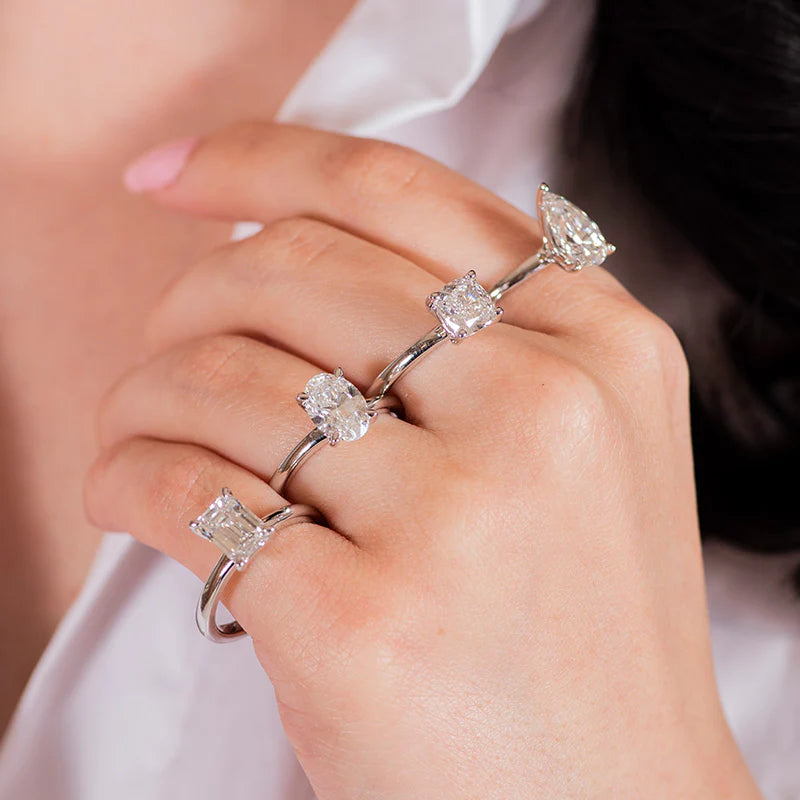Little Known Facts About Engagement Rings.
Little Known Facts About Engagement Rings.
Blog Article
Engagement Rings Fundamentals Explained
Table of ContentsSome Known Questions About Engagement Rings.Some Ideas on Engagement Rings You Need To KnowEngagement Rings for DummiesEngagement Rings Can Be Fun For AnyoneEngagement Rings Can Be Fun For AnyoneGet This Report about Engagement Rings
Tension-style settings additionally give far better security for the gems. A lot of tension-style settings are made for rounded great diamonds or various other round gemstones, but they can be changed to fit lots of other shapes. The setup can likewise be modified to have accent treasures around the centre rock or to allow for a side stone on each side of the centre rock.Creates an optical illusion of the centre gems hanging in the air. If it has prongs, they can come to be loosened with wear. This is quickly treated by having the ring on a regular basis cleaned up and inspected by a jeweller.
A Biased View of Engagement Rings
The very first ring with a real stress setting was made in Vreden, Germany in the 1970s. Ursula Exner and popular artist Walter Wittek worked together to layout and make this first ring. In the complying with years, various other jewelers designed their own tension settings, as well as the more safe and sensible tension-style settings.

This offers the ring a straightforward, however trendy elegance that functions well for both males and females's wedding event rings, as well as involvement rings. The flush setting is sometimes likewise called a gypsy setting. We can not state without a doubt just how it came to have that name, but possibly it is because the setting represents a complimentary spirit.
The 6-Minute Rule for Engagement Rings
Flush settings work well for round, square or rectangular gems, yet they can be hard to adapt to certain elegant cuts, for instance, a heart-shaped diamond. Maintains the gemstones safe and safe.
Advises the proprietor to grow a complimentary spirit (engagement rings). Given that the gems are embeded in the shank, they get a restricted quantity of light and create much less brilliance. Usually impractical for heart-shaped gems and a couple of other gems with fancy cuts. Rings with flush or gypsy settings have been around because the late 1800s.
Jewelry interaction rings have only one centre gems on an ordinary band. Numerous various other interaction rings, though, additionally have accent gemstones.
Engagement Rings for Dummies
There are 4 settings that are extensively utilized to hold accent gems. The castle setting made its name because from the side it resembles the battlements on top of a castle wall surface. This setup is also regularly called the scallop setting. Castle setups are made directly on the shank of the ring.
The prongs in a castle setting can be directly and down with simple rounded pointers or they can be cut at an angle to ensure visit the website that they resemble fishtails. These fishtail prongs can additionally be called French cut prongs. Castle setups are extremely functional. They can be set totally around the shank, just put across the ring's shoulders or made use of to create a halo around the centre gemstone.
The smart Trick of Engagement Rings That Nobody is Discussing
If it is well made, the low scalloped edge of the castle setup can additionally produce an optical illusion. It permits the sides of the gems to be quickly seen and creates the impact that the treasures are being held in an undetectable setting.
Increases light refraction and luster. Catches interest with its sparkles. Creates the impression navigate to this website of an unnoticeable setting. Has an elegant elegance. Easy to clean and requires little upkeep. The little prongs can become loosened. We suggest that rings with the castle setting be cleansed sometimes by a jeweller, to make sure that the prongs can be checked.
The prongs on a castle setting can capture on apparel, but this is unusual because the prongs are smooth. The castle setup can be utilized to make lovely endless time rings.

Getting My Engagement Rings To Work
The grain setting is an extremely protected setup. The sides of the channel secure the accent gems from bumps and scratches and the handmade Check This Out prongs seldom come to be loose. One drawback of the grain setting is that the gems receive less light due to the fact that they are set down in the network. This results in the gems creating slightly less luster and sparkle.
Every gem in the bead setup is bordered by 4 glossy grains that are level with the top of the shank. These beads catch the light and discharge their very own shimmers everywhere. The beads' glimmers along with the luster and shines created by the accent treasures bring the grain readying to life and provide it continuous sparkles.
They can utilize it to make infinity rings, in addition to to decorate the simple shank or even more complex split shank that some interaction rings have. In the fundamental bead setup, the accent gems are set in one straight line. Periodically, however, jewellers will raise the shimmer on an interaction ring by adding 2 or even more parallel lines of grain set gems.
Report this page